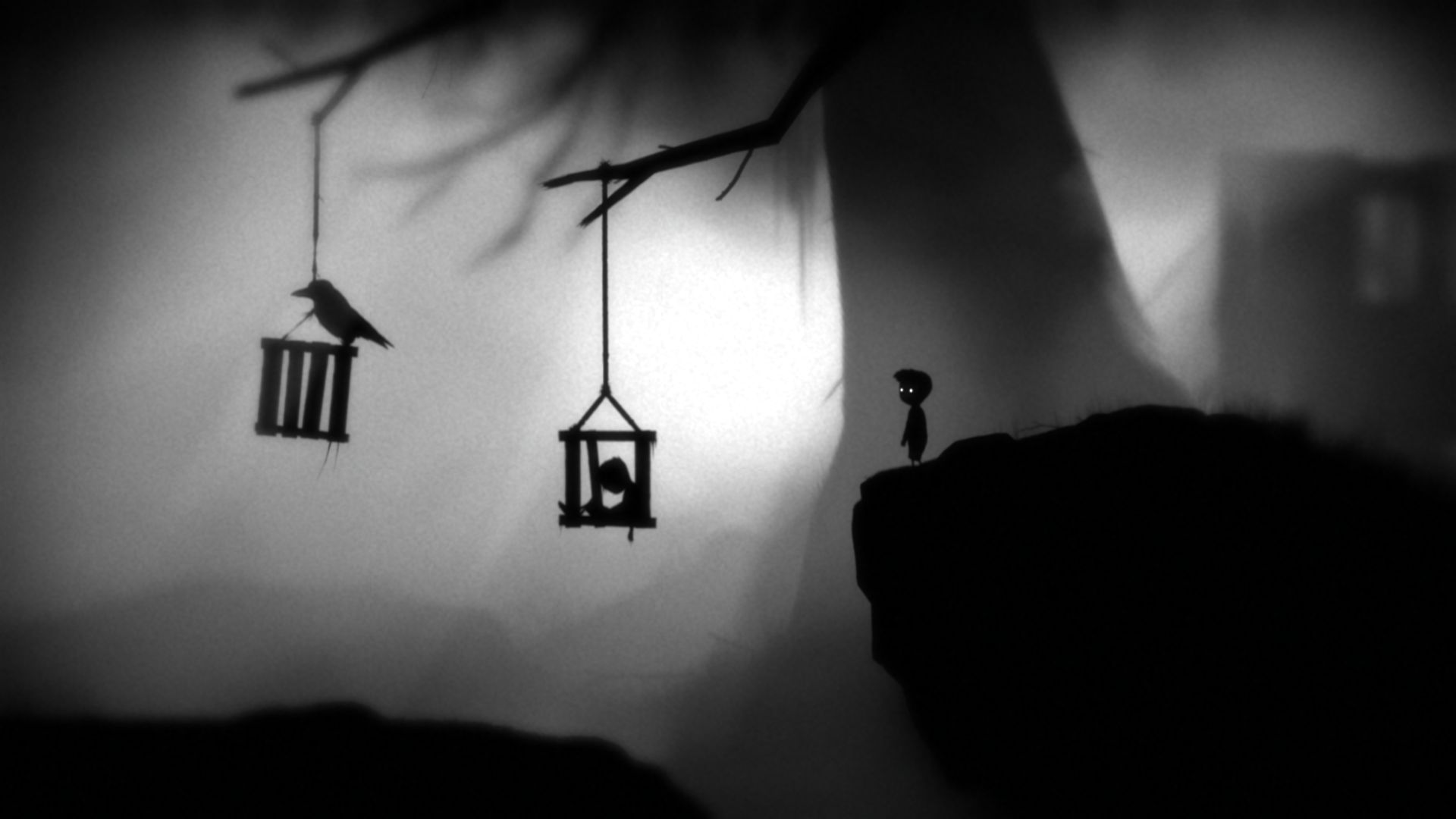Game description
Limbo is a 2D side scroller platform game in which the player controls a nameless little boy who is looking for his sister. The player does not learn anything about a backstory. To progress in the game the player has to solve puzzles which make use of mechanical effects, gravity, magnetism, among other things. Additionally, one has to avoid dangers such as foothold traps. In some cases, these dangers are not immediately visible, such that the player cannot help but make the character die in the first attempt and avoid them in a subsequent try when he knows about them. The game appearance is a dark, moody, greyscale look. It makes heavy use of fog and artistic blur. The deaths of the character are usually cruel, illustrated by disturbing animations of the detachment of body parts.
Website: http://limbogame.org/
gameplay video: http://www.youtube.com/watch?v=GT6M1_NnNZ8

Lens of Pleasure
What pleasures does your game give to players? Can these be improved?
- It is satisfactory to solve a puzzle and make progress in the game: resolving a period of frustration with a “eureka experience” of finally seeing the solution can be very pleasurable
- well-designed graphics, artwork and sound which work together in an aesthetically pleasing way are an enjoyable to experience for the player
What pleasures are missing from your experience?
- Game does not provide pleasure for players who especially enjoy the following game mechanics:
– levelling up
– collecting things
– noticeable improvement over time
– creating things
– action
Those aspects are not present in the game design.
Why? Can they be added?
- It seems like a conscious choice by the designers to keep the game as simple as possible and to concentrate on the core experience, avoiding everything that could distract from it.
Lens of Surprise
What will surprise players when they play my game?
- In many cases, deadly foothold traps cannot be spotted beforehand. Suddenly seeing the main character die in one of them will probably shock most players.
Does the story have surprises? Do the game rules/artwork/technology?
- When first playing the game, it is surprising not to get any type of instruction on what to do.
- The very reduced graphics style might be surprising for some players; however many players have already seen screenshots before they start playing \
- The movements the player can execute (running left/right, jumping, pushing and dragging objects) are not surprising since it is common to all platformer games.
Lens of Curiosity
- since everything is kept very mysterious, player’s curiosity is triggered
- curiosity is the motivation to keep on playing since no formal goal is stated
What questions does my game put into the player’s mind?
- There is no explanation or introduction, so players will ask themselves:
- Who is the character? What are his goals? What is the objective of the game? What is this dark and foggy venue?
- Mysterious things, like a white butterfly, are placed in the game world without any further explanation. What are these things about?
- How difficult will the game puzzles become?
What am I doing to make them care about these questions?
- The game hooks the players with interesting puzzles
- The possibility of a great story which will unfold later and resolve the beginning mystery keeps the player interested.

Lens of Freedom
When do my players have freedom of action? Do they feel free at these times? When are they constrained? Do they feel constrained at these times? Are there any places I can let them feel more free than they do now?
- When solving puzzles, player has the freedom to interact with moveable objects in the game world. For example boxes, ropes or corpses of beasts. However, the number of these objects is usually very low.
- The overall freedom the player has is very limited. Firstly of course by the fact that the platformer-genre only allows movement in two spatial dimensions. Secondly, because at every state in the game there is usually only one way (or very few ways) to progress.
- Other than trying to solve the puzzles, there is not much else to do. This fact does not change for the entire duration of the game.
- Despite this lack of freedom, the overall feeling of the game is not dominated by feeling constrained. This is partly achieved by the level design: Progress is made by moving to the right, and there is no boundary at the right until the end. This makes the world seem big and open, even though in fact only a certain range of the world can be accessed at any given time (you can’t move all the way back to the left because of certain one-way obstacles in the level design)
Lens of the Visible Progress
Players need to see that they are making progress when solving a difficult problem.
To make sure they are getting this feedback, ask yourself these questions:
What does it mean to make progress in my game or puzzle?
- The visual environment changes from a forest to a more industrial setting
- The character of the puzzles changes from (involving classical mechanics, animals, etc.) to puzzles which make use of technology such as electricity or gravity-inversion.
- The difficulty of the puzzles gets slightly harder in the course of the game
- Besides those aspects, we don’t feel progress. For example, the character does not learn
